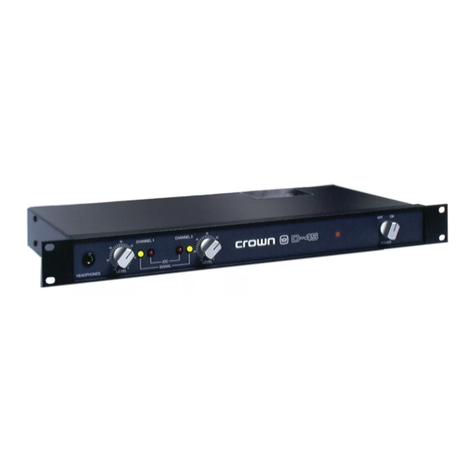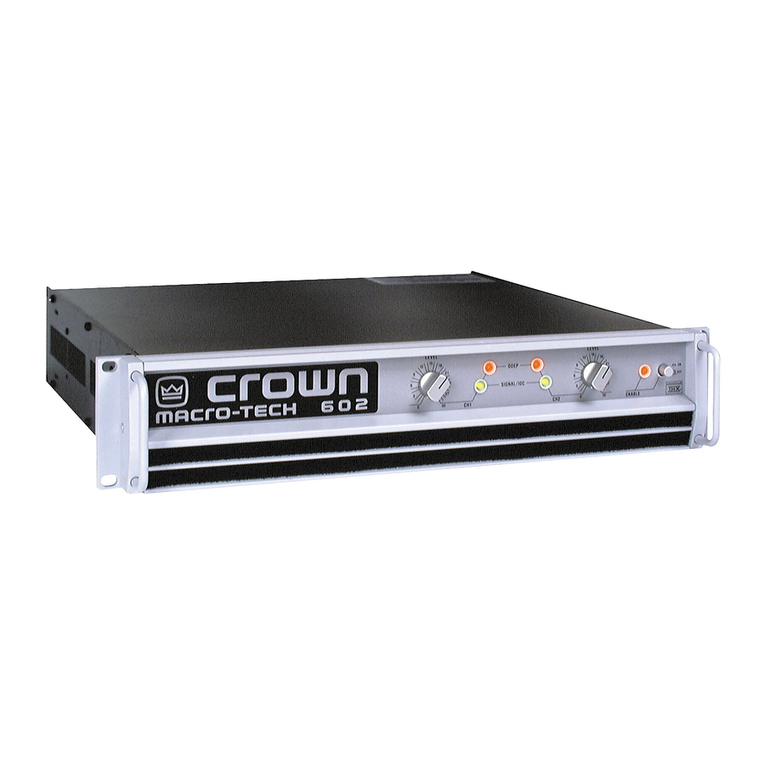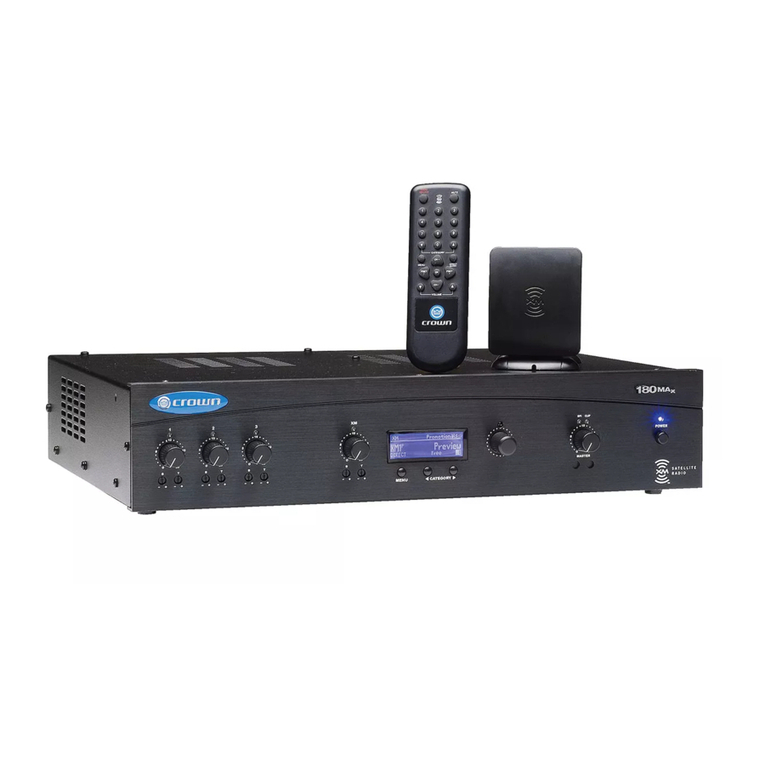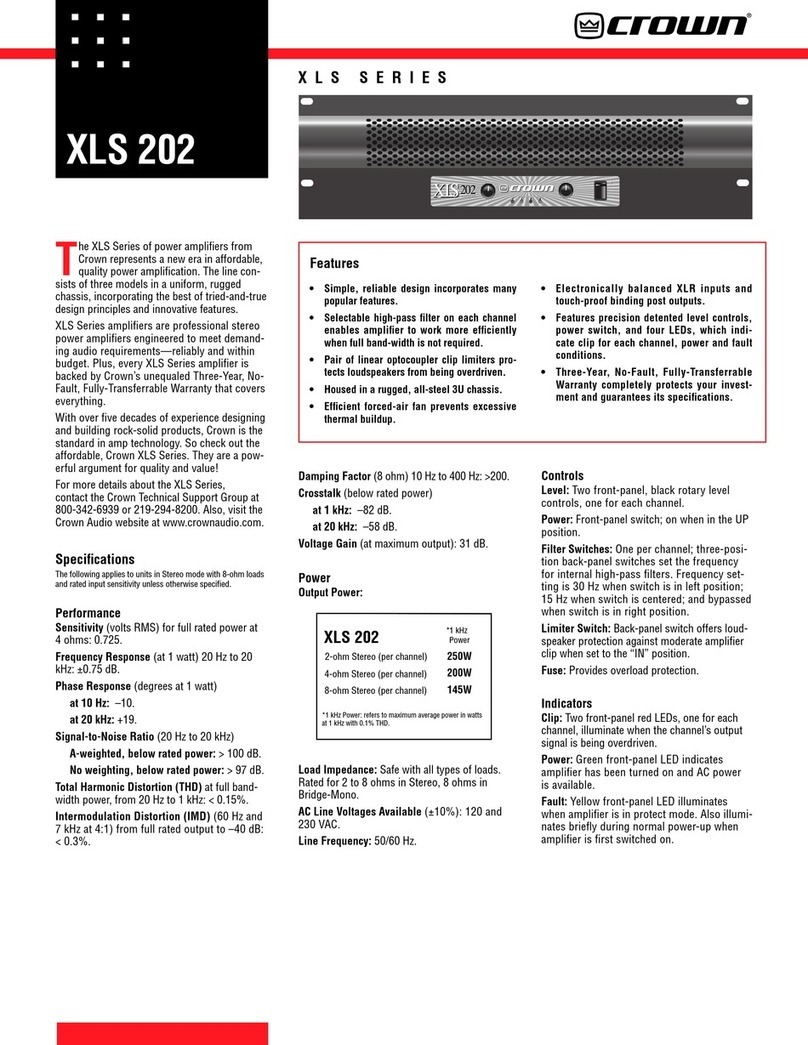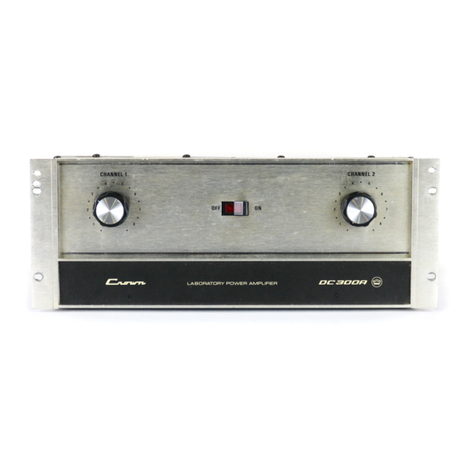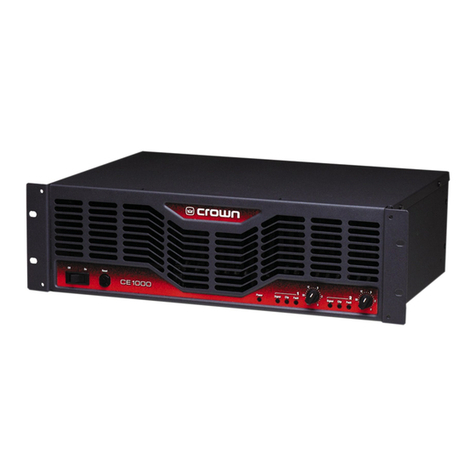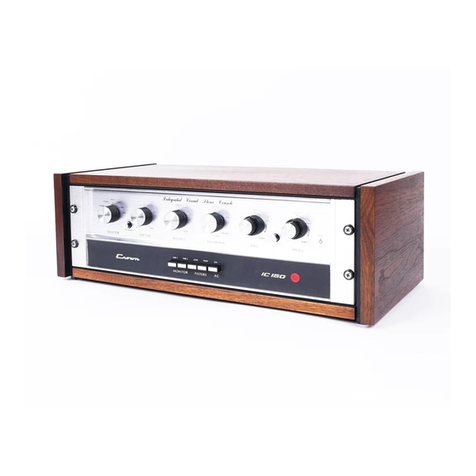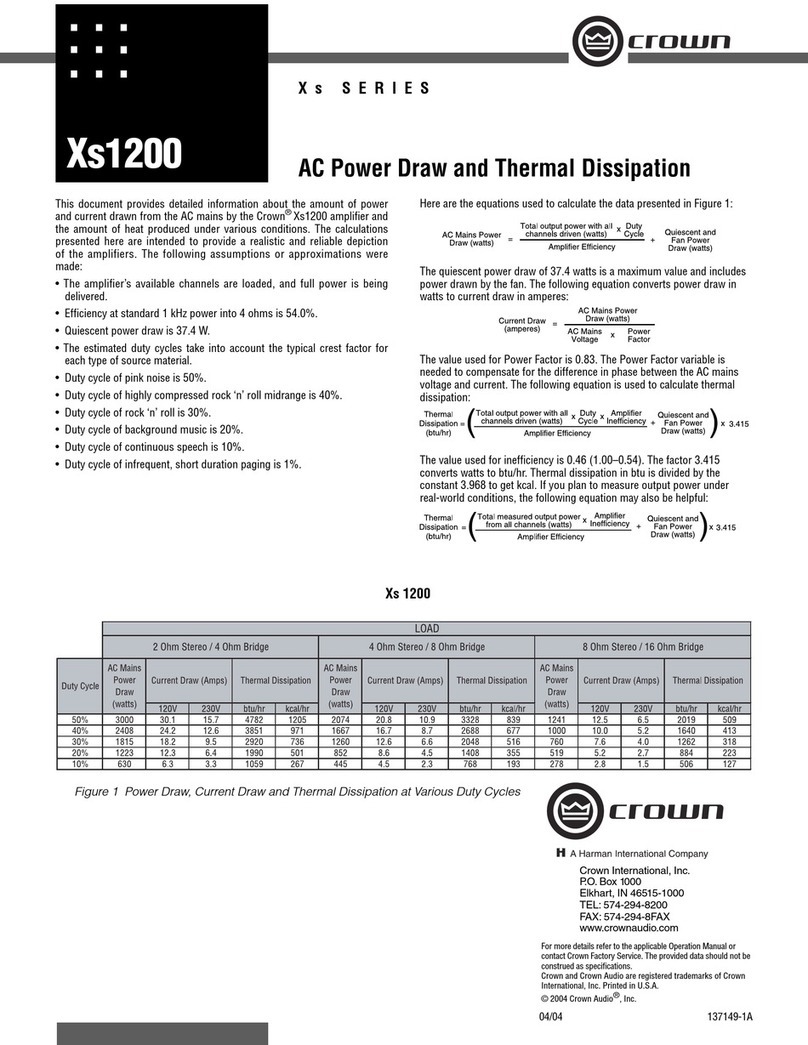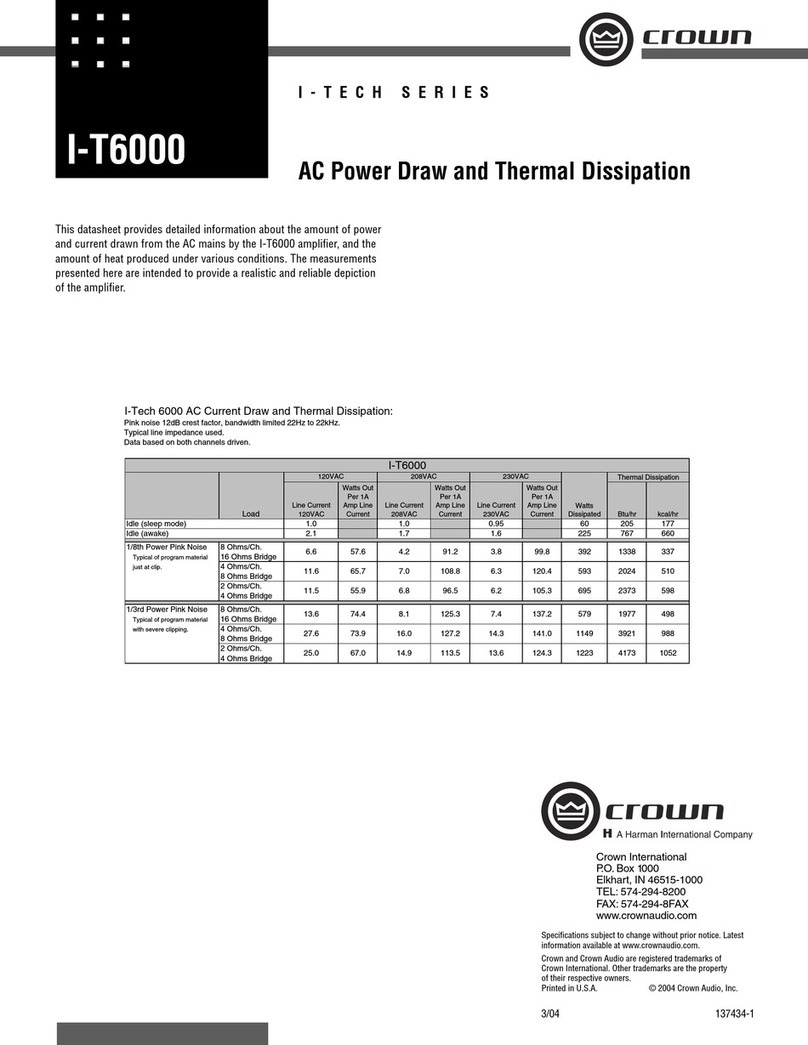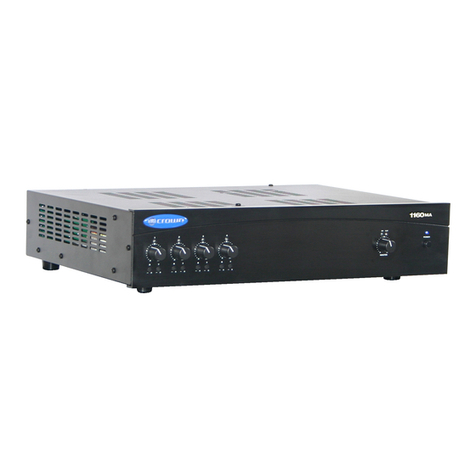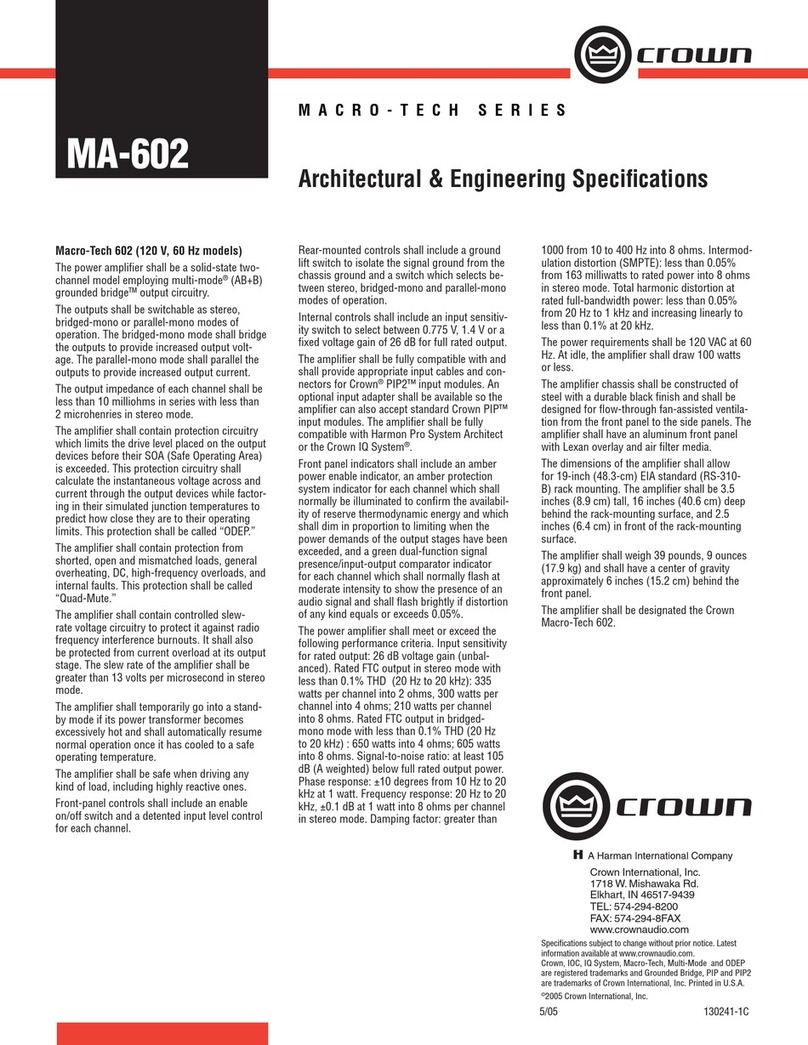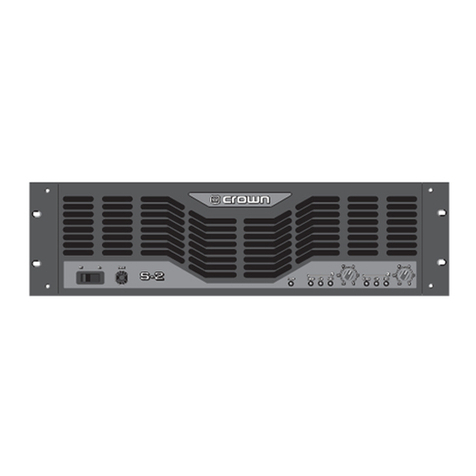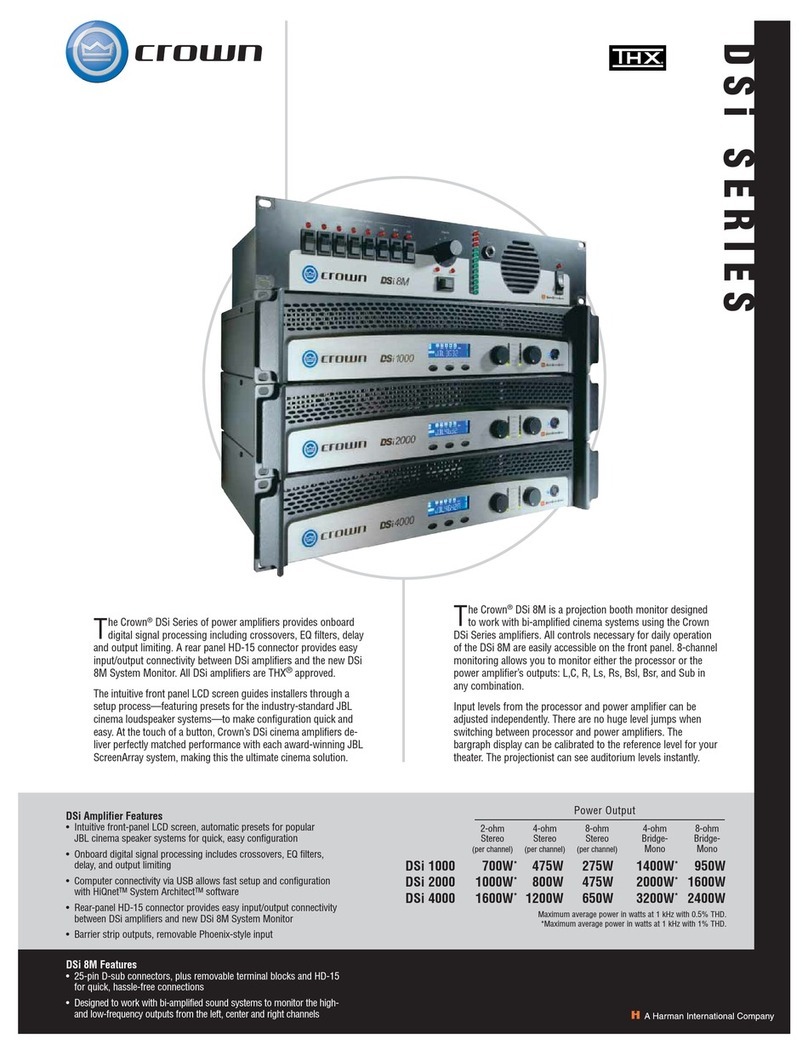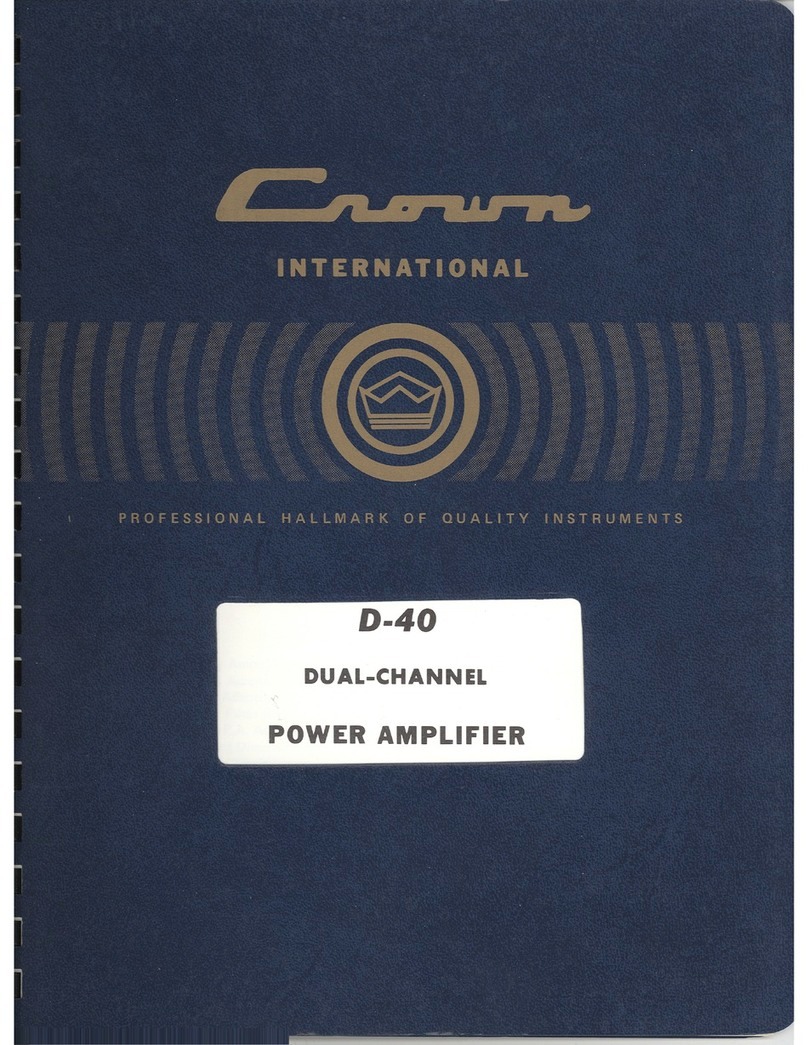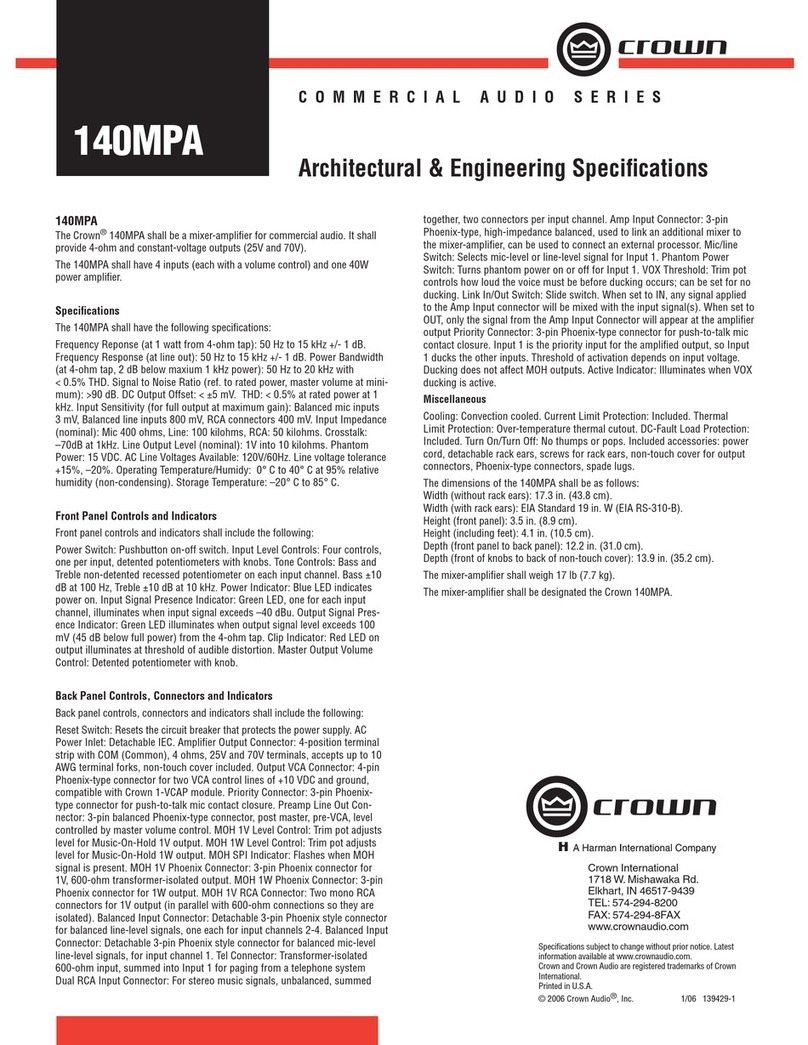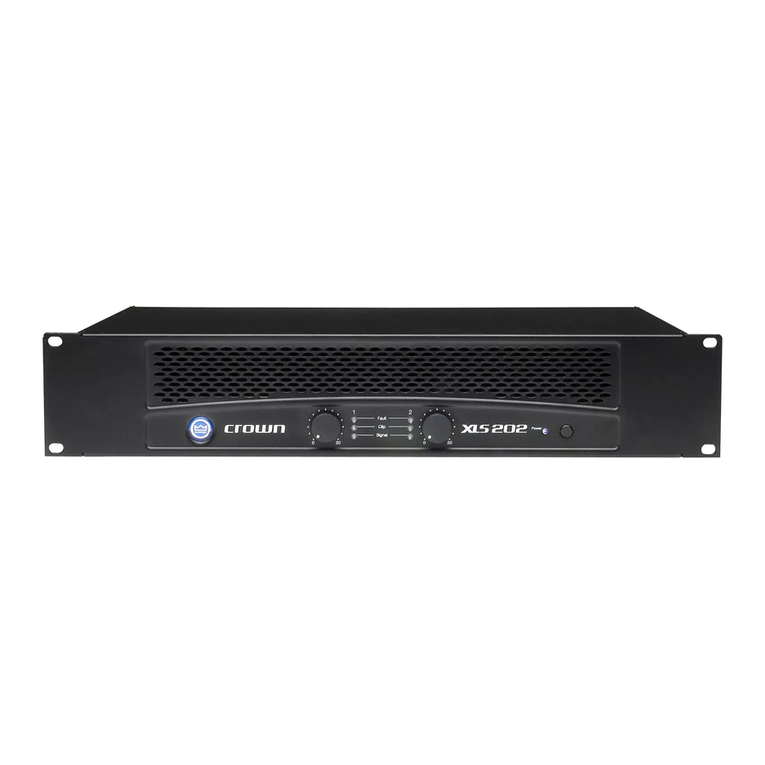
Specifications 2-1
130445-1 Rev. A MA-2402 Service Manual
©2000 Crown International, Inc.
6 Specifications
Note: Specifications relate to 120-volt,60-Hz units in Stereo mode with 8-ohm loads and
an input sensitivity of 26-dB gain at 1-kHz rated power unless otherwise specified.
Specifications for units supplied outside the U.S.A. may vary slightly at different AC
voltages and frequencies.
Power
Output Power:
Load Impedance: Safe with all types of loads. Rated for 2 to 16
ohms in Stereo, 4 to 16 ohms in Bridge-Mono and 1 to 4 ohms in
Parallel-Mono mode.
Voltage Gain to 1-kHz, 8-ohm rated output;
83:1 ±12% or 38 dB ±0.5 dB at 0.775-volt sensitivity;
46:1 ±12% or 33 dB ±0.5 dB at 1.4-volt sensitivity.
20:1 ±3% or 26 dB ±0.25 dB at 3.1-volt sensitivity at the maximum
level setting.
Required AC Mains: 50/60 Hz; 100-, 120-, 220- and 240-VAC
(±10%) units are available. All draw 100 watts or less at idle.
Current, voltage and frequency requirements are provided on the
unit’s back-panel.
AC Line Connector: NEMA 5-20P (20A).
Performance
Frequency Response: ±0.1 dB from 20 Hz to 20 kHz at 1 watt (see
Figure 2.5).
Phase Response: ±10 degrees from 10 Hz to 20 kHz at 1 watt (see
Figure 2.3)..
Signal-to-Noise Ratio, A-weighted:
Better than 105 dB below rated full bandwidth power.
20 Hz to 20 kHz:
Better than 100 dB below full bandwidth power.
Total Harmonic Distortion (THD): full bandwidth power, Less than
0.05% from 20 Hz to 1 kHz increasing linearly to 0.1% at 20 kHz.
Intermodulation Distortion (IMD): (60 Hz and 7 kHz at 4:1) Less
than 0.05% from 163 milliwatts to full bandwidth power.
Damping Factor: Greater than 1,000 from 10 Hz to 400 Hz (see
Figure 2.6).
Crosstalk: See Figure 2.4.
Slew Rate: (Slew rates are limited to useful levels for ultrasonic/RF
protection). Greater than 13 volts per microsecond.
Controls
Enable: A front-panel push button used to turn the amplifier on and
off.
Level: A front-panel 31-detent rotary control for each channel used
to control the output level.
Stereo/Mono: A three-position back-panel switch used to select
Stereo, Bridge-Mono or Parallel-Mono mode.
Sensitivity: A three-position switch inside the PIP compartment
used to select the input sensitivity for both channels: 0.775 volts or
1.4 volts for standard 1-kHz power, or a 26 dB voltage gain.
Reset: A back-panel push button for each channel used to reset the
circuit breaker that protects each power supply.
Indicators
Enable: An amber front-panel indicator that shows the on/off status
of the low-voltage power supply.
Signal/IOC: A green front-panel indicator for each channel that
flashes to show amplifier output. If a channel’s output waveform
differs from its input by 0.05% or more, the indicator flashes
brightly to show distortion. This function provides proof of
distortion-free performance. In Parallel-Mono mode, the Channel 2
light stays on.
ODEP: An amber front-panel indicator for each channel that shows
thermal-dynamic energy reserve. Normally, each ODEP indicator is
lit to show available reserve energy. In the rare event that a channel
has no reserve, its indicator will dim in proportion to ODEP limiting.
An ODEP indicator may also turn off under other conditions.
Input/Output
Input Connector: Two balanced ¼-inch(6.35-mm) phone jacks and
two balanced three-pin female XLR connectors on the factory-
installed PIP2-FXQ.
Input Impedance: Nominally 20 k ohms, balanced. Nominally 10 k
ohms, unbalanced.
Maximum Input Level: 9 Vrms.
Input Sensitivity: 0.775 volts for standard 1 kHz power, 1.4 volts
for standard 1 kHz power, or a 26 dB voltage gain.
Output Connectors: Two sets of color-coded 5-way binding posts
(for banana plugs, spade lugs or bare wire).
Output Impedance: Less than 10 milliohms in series with less than
2 microhenries (see Figure 2.7).
DC Output Offset: (Shorted input) ±10 millivolts.
Output Signal
Stereo: Unbalanced, two-channel.
Bridge-Mono: Balanced, single-channel. Channel 1 controls are
active; Channel 2 should not be used.
Parallel-Mono: Unbalanced, single-channel. Channel 1 controls are
active; Channel 2 controls are bypassed.
Protection
Macro-Tech amplifiers are protected against shorted, open or
mismatched loads; overloaded power supplies; excessive tempera-
ture; chain destruction phenomena; input overload damage; and
high-frequency blowups. They also protect loudspeakers from
input/output DC and turn-on/turn-off transients.
If unreasonable operating conditions occur, the patented ODEP
circuitry will proportionally limit the drive level to protect the output
2-ohm Dual (per ch.)
1 kHz
Power
1,050W
800W
520W
2,070W
1,585W
850W
750W
505W
1,670W
1,485W
8-ohm Bridge-Mono
4-ohm Bridge-Mono
8-ohm Dual (per ch.)
4-ohm Dual (per ch.)
*1 kHz Power: refers to maximum average power in watts
at 1 kHz with 0.1% THD.
**20 Hz–20 kHz Power: refers to maximum average power
in watts from 20 Hz to 20 kHz with 0.1% THD.
MA-2402 *20 Hz– 20 kHz
Power
**
2 Specifications
